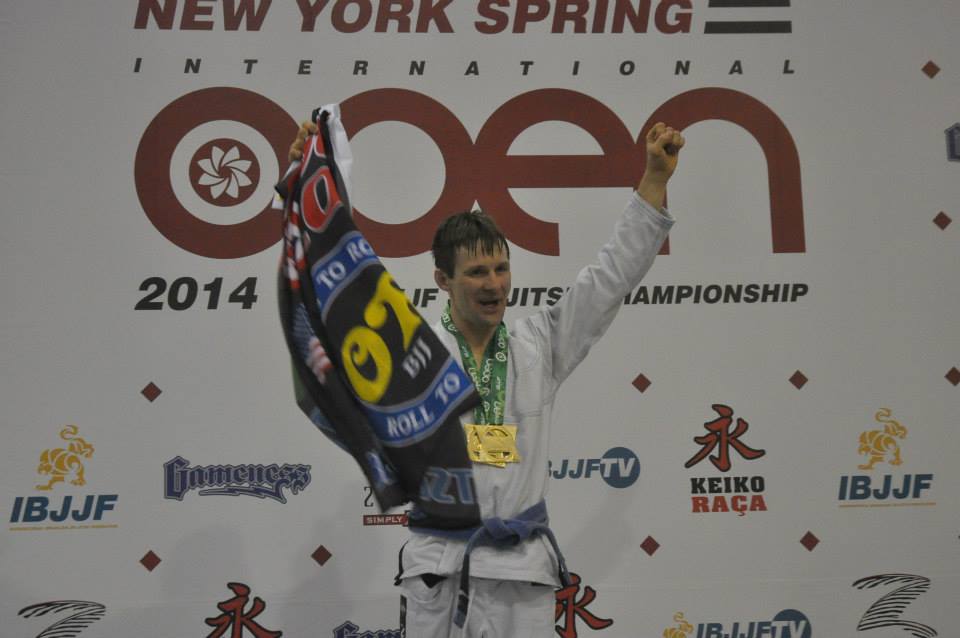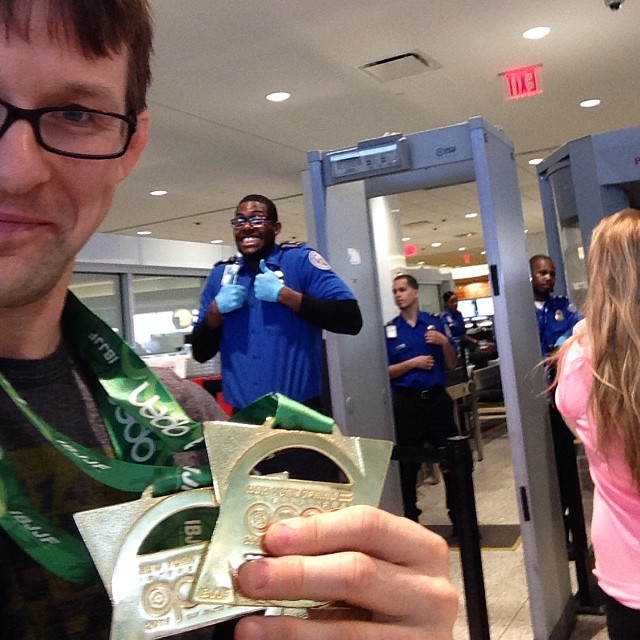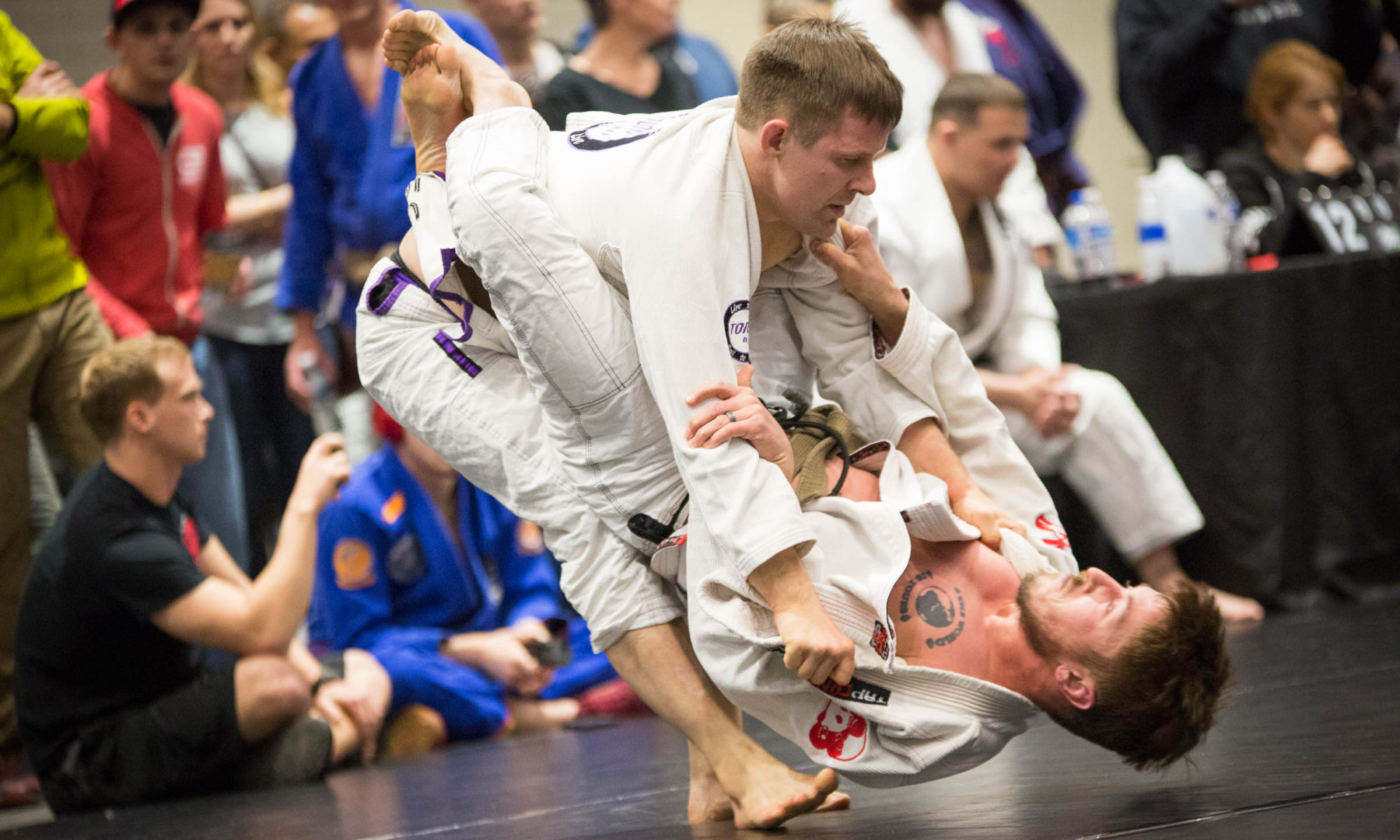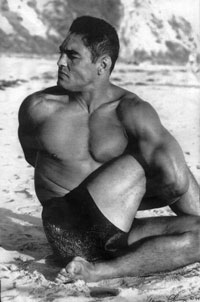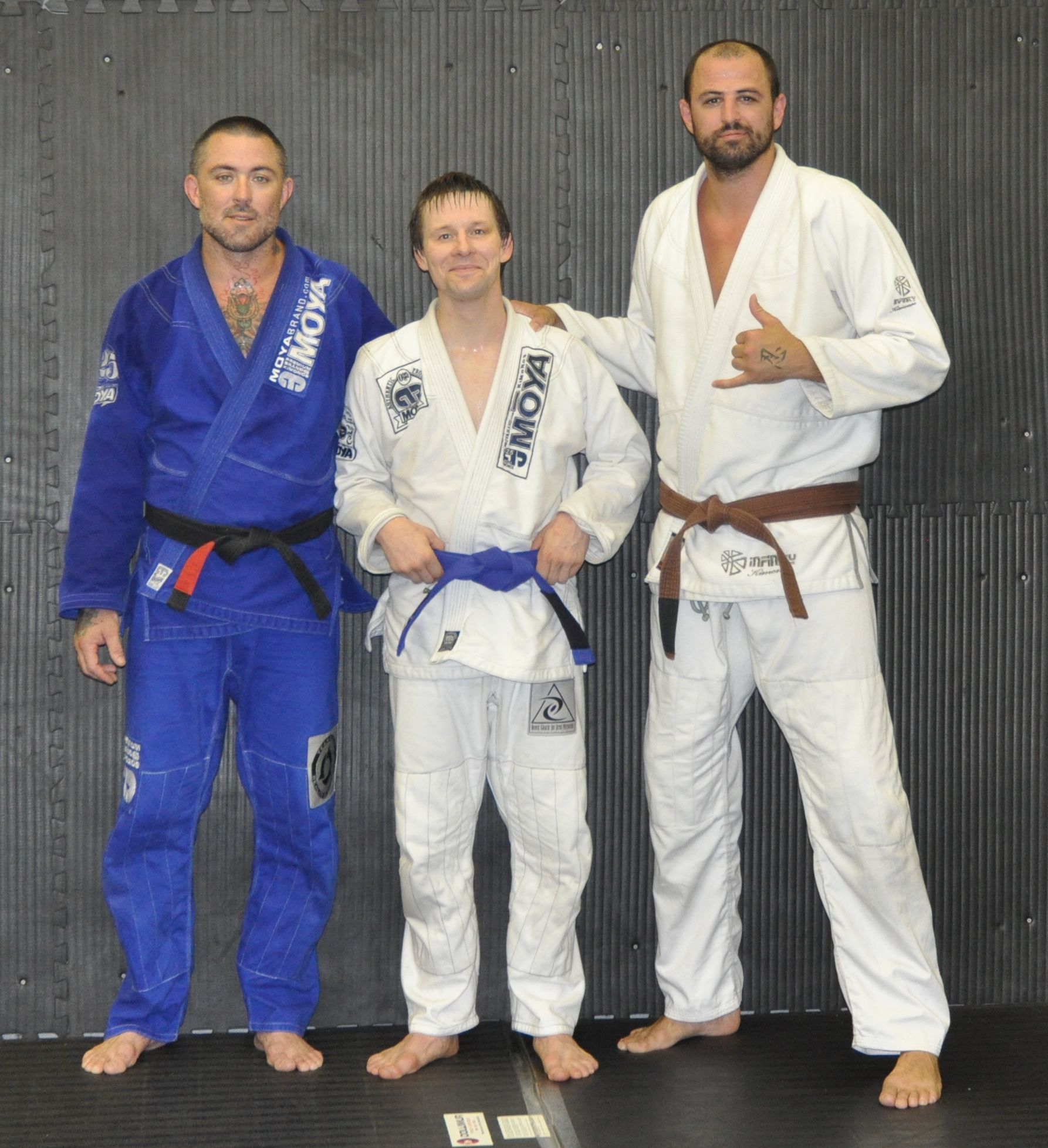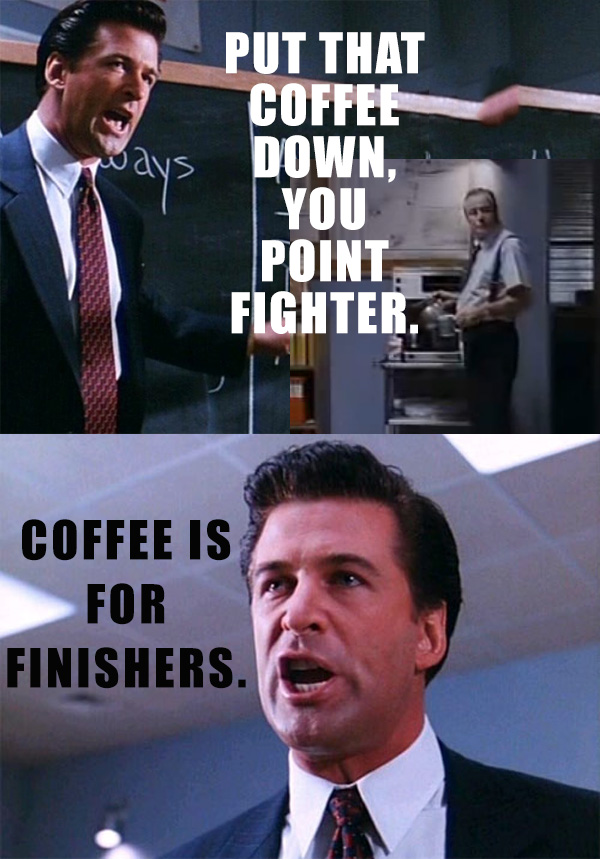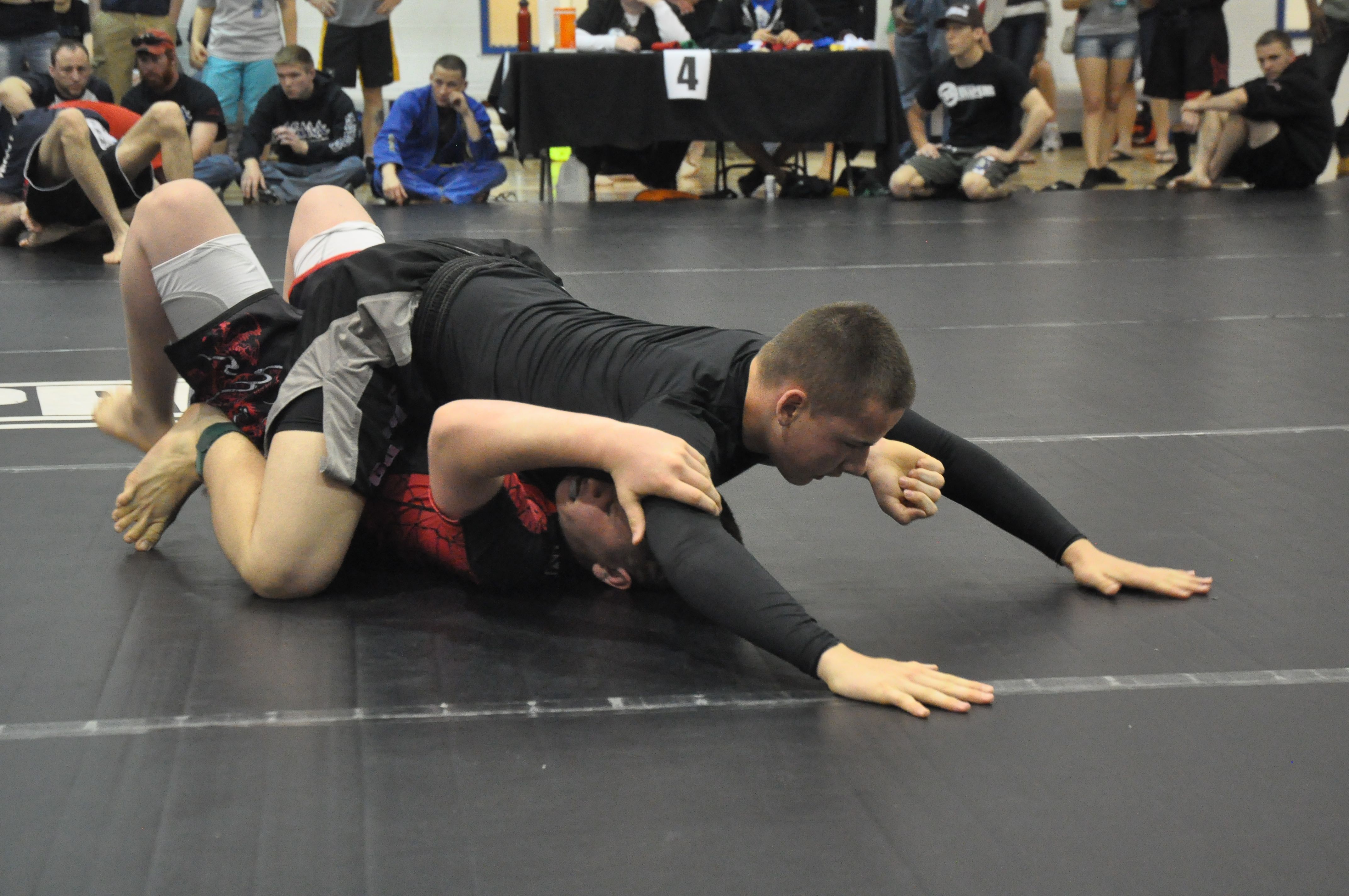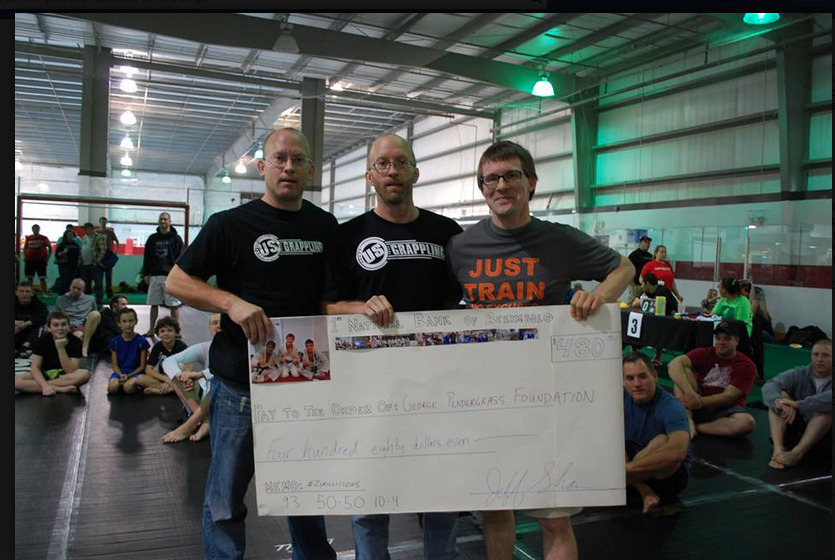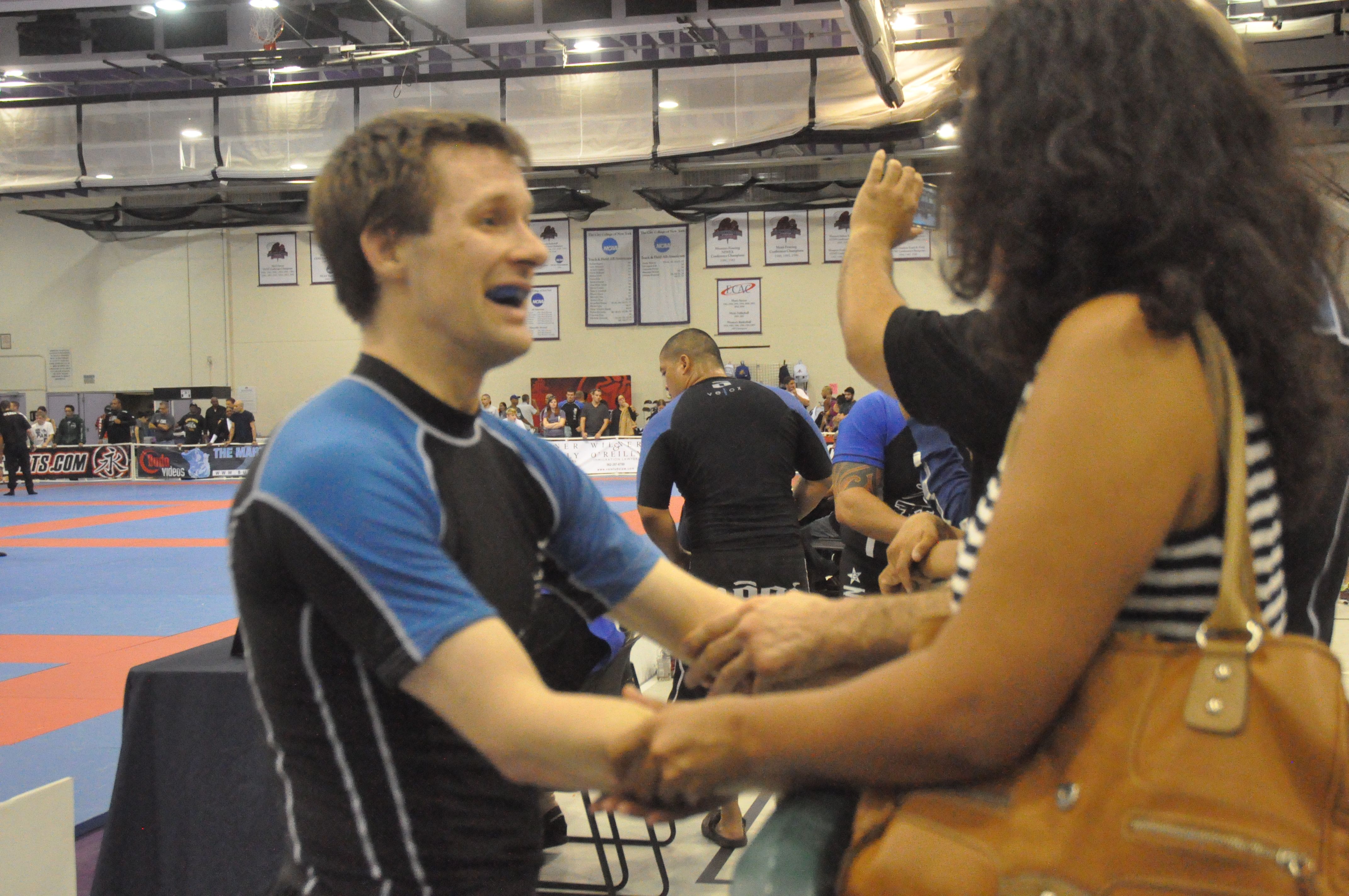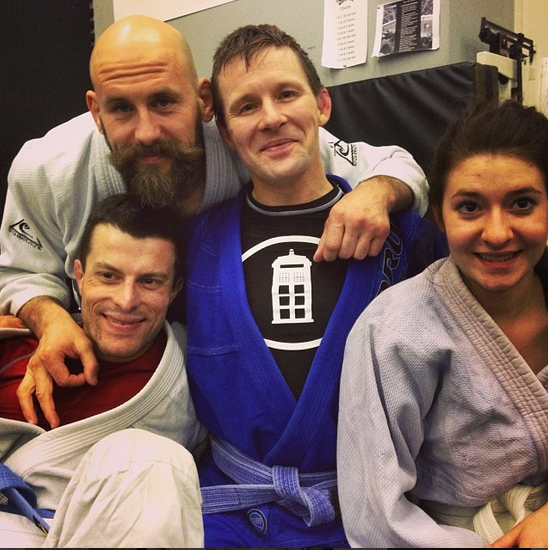I wanted to write this post before the tournament this past weekend.
It’s easy to be grateful when things go well. Besides, good decision-making is about putting a good process into place, not about results: if you make quality choices, quality results follow. If you’ve done all you can to prepare well, that’s really all you can hope for, so it’s appropriate to thank the folks that have helped you prepare no matter how the event itself goes.
The best laid plans go astray, though, especially where travel and making weight and living up to other responsibilities goes. So while I meant to make this post Friday, I’m making it now, and I can gratefully report that the IBJJF New York Spring Open went as well as I had hoped it would.
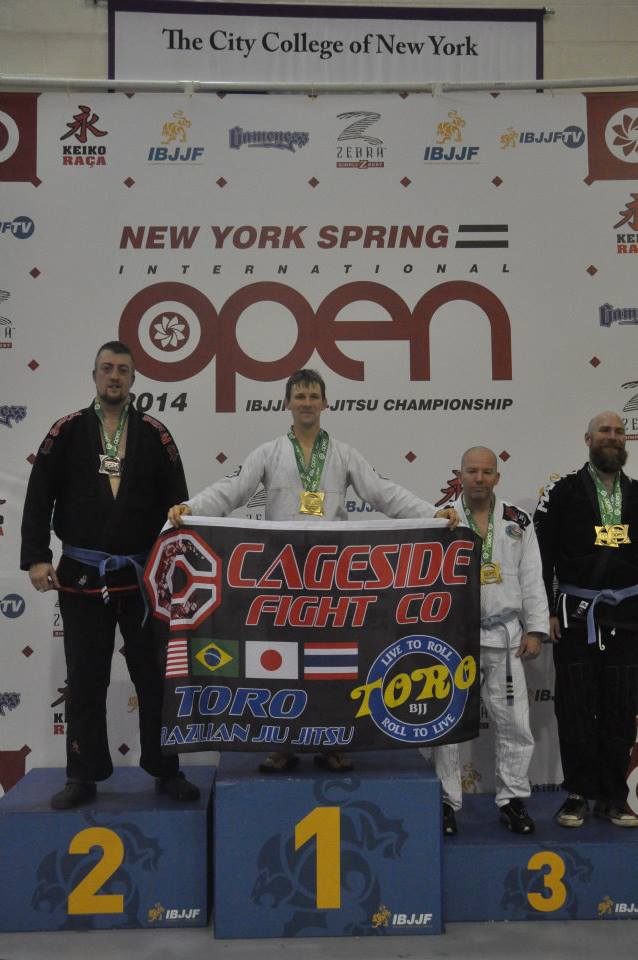
I took double gold, both in my light feather weight class and in Absolute. I competed in Master 2 blue belt, and got two really good, tough matches in. I don’t really talk about my goals a lot, for a variety of reasons, but I’d always wanted to win an IBJJF absolute gold. The closest I’d come was bronze at the NoGi pans last year, and I thought that might be as close as I’d ever get.
But I trained so, so hard for this tournament. Really tried to do everything as correctly as I possibly could. It took a lot of discipline, and I’d be proud of the way I trained even if I hadn’t gotten the results I wanted. You can’t control how your matches go, but you can control how you prepare, and I prepared harder and smarter than ever before.

No one does anything like this alone. There are a lot of people that I need to thank, and my Facebook friends have already put up with an enormous amount of jiujitsu, so I’m thanking them all here.
First and foremost I have to thank my coach Seth Shamp, who is black belt under Royce Gracie. Seth’s the best instructor a guy could ask for: technical, a gifted teacher and passionately devoted to his students. Best of all, Seth believes 100% in you. I think I could’ve been facing Cobrinha in finals and Seth would’ve said something like: “OK, Jeff. This guy’s truly great. A legend of the art. But I think you can do some things with him! We can do this! Here’s the plan.” That kind of support you can’t put a price on.
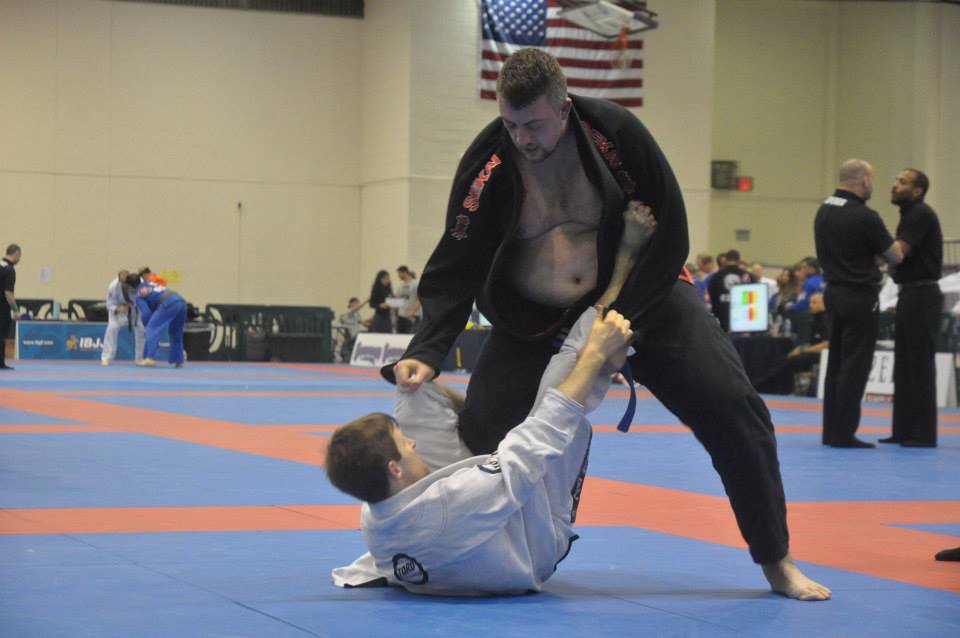
I also want to especially thank two other Royce Gracie black belts, Jake Whitfield from TJJ Goldsboro and Roy Marsh from Sandhills Gracie Jiu-Jitsu. Jake and Roy live and breathe Gracie Jiu-Jitsu, and each has taught me so much in the past few years, either directly (through instruction) or indirectly (through beating my ass while training). Along with Seth these guys make up my Holy Trinity of BJJ instruction.
Perhaps most importantly, I want to express my gratitude to every single one of my training partners at Triangle Jiu-Jitsu in Durham and Triangle Jiu-Jitsu in Goldsboro, North Carolina. Every day you guys and ladies work me hard, kick my butt and make me better, and I couldn’t possibly be more grateful to you.
I want to shout out two guys who especially inspire me from Roy Marsh’s school at Sandhills BJJ. One is my friend Brian Freeman, who needs to get out to Durham and train with us soon. The other us Alec Cerruto, who is a great young man with sick jiujitsu and an even better attitude. Alec is donating money for every match he wins this year to help feed underprivileged kids. I’m going to add to my own Charity Challenge this year and donate $10 for every match I win to Alec’s “Submit Hunger” project in addition to my own charities. 

Broadly, I’m also in the debt of all my brothers and sisters on Team Royce Gracie in North Carolina — Chapel Hill Gracie Jiu-Jitsu, Forged Fitness Raleigh and Cary. I appreciate everybody who took the time to help me train for this, including my friends at Gracie Raleigh and Pendergrass Academy of Martial Arts. We have a great jiu-jitsu community in North Carolina and I’m thrilled to be a part of it.
Just a couple of more important people to thank: I want to be sure to thank Boomer from Cageside MMA and Toro BJJ. Besides making great products and letting me design really fun BJJ gear, Boomer does a lot — behind the scenes and not — to help local fighters, BJJ practitioners and human beings generally. I can’t say enough good things about the gear he produces. I could say even more good things about him personally.
Finally, I’ve thanked Eric Uresk already multiple times, but for the first time I’ve been working with a nutritionist, and let me tell you — it makes an incredible difference. Eric’s a genius, and his WellFit program works. If you’re interested in taking nutrition seriously, let you know and I’ll put you in touch.
I am definitely leaving some people out that deserve thanking, but this is already long. I’ll have to leave it here and thank the rest of you in person. Rest assured, though, even if this is a one-time post, I’m grateful to all of you, all the time. So thanks.
